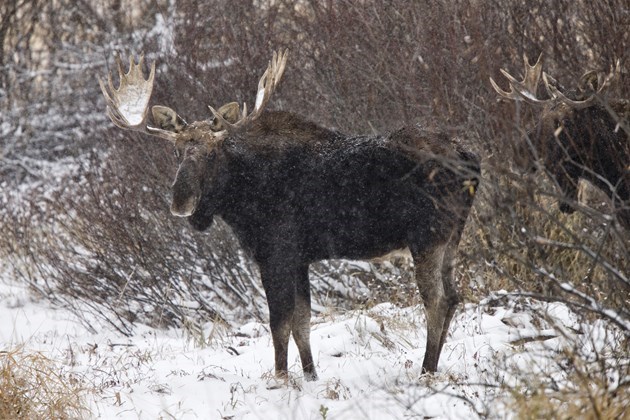Do you often spot moose while you are out-and-about in your day-to-day life? Are they ever close enough for you to get a good look at the state of their fur?
If so, the province needs your help.
The B.C. wildlife health program is asking for help assessing the effects of winter ticks on the province’s moose population. Every year the province conducts a moose an annual winter tick surveillance program to see how bad the tick problem is getting.
Winter tick infestations can directly affect the survival rates of moose because the infestations can result in severe behavioural and physiological changes in moose, especially in younger animals.
There can be as many as ten thousand ticks on an individual moose. The extent of hair loss on a moose can be observed easily from a distance and is a rough indicator of how many ticks are present.
Residents are encouraged to report their observations through an online survey.
The surveillance program relies on observations from wildlife professionals, wildlife enthusiasts, and the general public to monitor the number of moose with hair loss, assess the amount of hair loss on each animal and estimate the overall prevalence and distribution of winter ticks.
The infestations are generally observed on moose during January through April.
Winter ticks can have a significant impact on moose populations especially when climate and habitat promote high tick numbers.
This species of tick goes through three life cycles on one host. As the ticks mature they feed on the blood of the animal and can cause anemia. Then in late winter, the irritation can cause moose to excessively scratch and groom themselves resulting in hair loss and less time spent foraging which leads to weight loss.
The survey will ask participants to check a box which most accurately describes the appearance of the moose. There are five categories ranging from “no hair loss” to “more than 80 per cent loss of winter hair.”
The findings of the surveillance program will contribute to the Provincial Moose Research Program, which was initiated in 2013 to investigate factors influencing moose populations in British Columbia.




